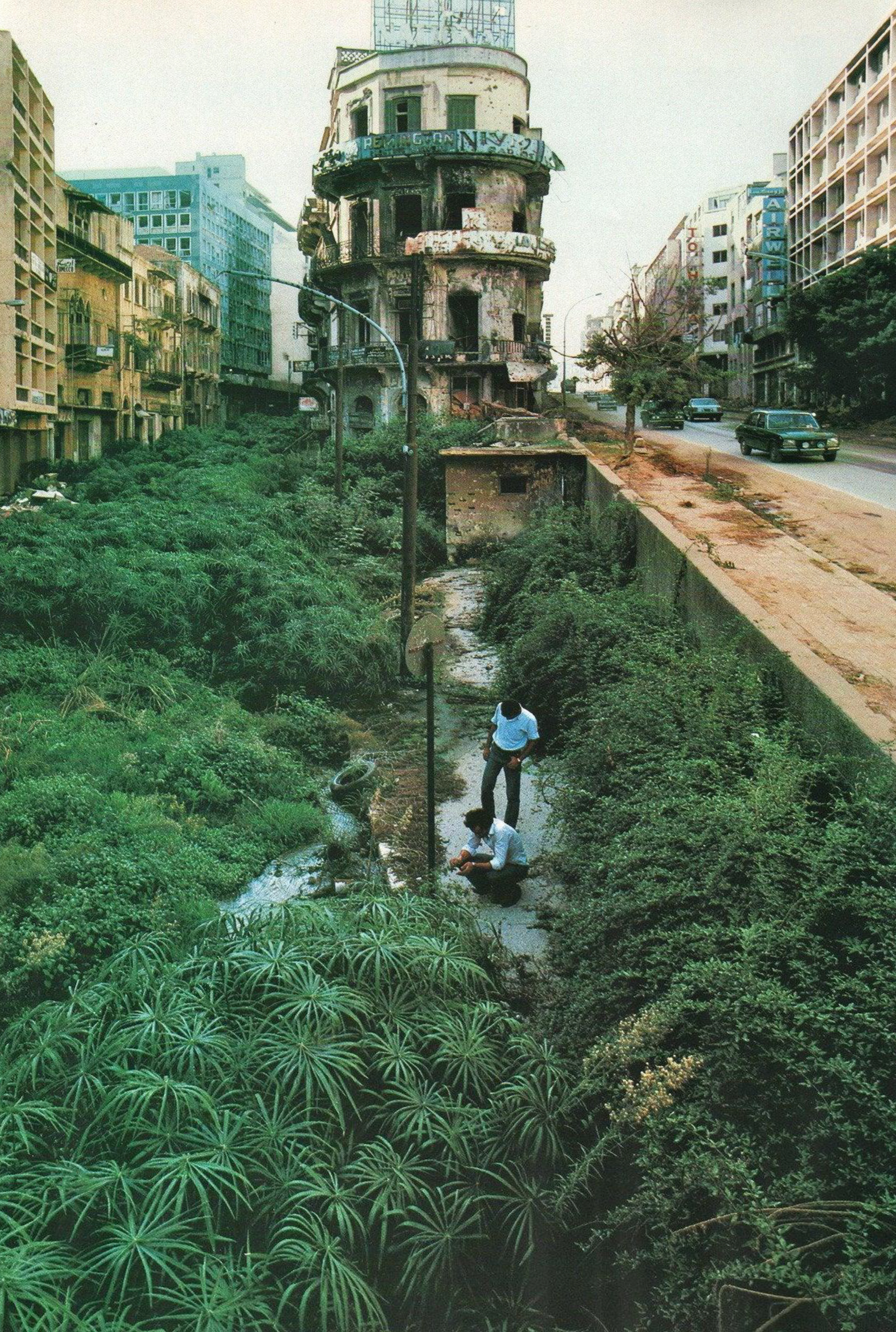PAST TALKS 2022
4 October 2022
‘DocTalks x MoMA’
The Green Line’s Organisms:
RAMI KANAFANI
UPenn Architecture
Respondent: Bárbara Maçães Costa, EPFL
![]() The Green Line, Beirut, 1982
The Green Line, Beirut, 1982
Steve McCurry, from the personal collection of Gabriel Daher
***
Informal vs Formal:
EYUP OZKAN
Istanbul Technical University
Respondent: Elis Mendoza Mejia, Princeton University
Folding Chronologies: Rodosto Farm Colony and Murondins juxtaposed. Source: McLeod, Mary. 2018. “‘To Make Something with Nothing’: Le Corbusier’s Proposal for Refugee Housing—Les Constructions ‘Murondins.’” Journal of Architecture 23 (3): 421–47. Near East Foundation. 2016. “Home, Hearth, and Family: Near East Relief’s Rodosto Farm Colony.” October 14, 2016. https://neareastmuseum.com/2016/10/14/rodosto-farm-colony/.
Edited by the presenter.
‘DocTalks x MoMA’
The Green Line’s Organisms:
Human-Plant Relations in War-Torn Beirut
RAMI KANAFANI
UPenn Architecture
Respondent: Bárbara Maçães Costa, EPFL
 The Green Line, Beirut, 1982
The Green Line, Beirut, 1982Steve McCurry, from the personal collection of Gabriel Daher
In 1975, with the start of the Lebanese civil war in Beirut, human social life migrated from the surface of the city to the underground where basements became the safest places to be. At the same time, vegetal life migrated from the underground – or a few inches below ground – to the surface. A linear stretch of greenery (The Green Line) surfaced along the line of demarcation that separated the two fighting sides of the city, revealing the structural dependence of spontaneous vegetal growth on human conflict and war. This paper develops an analytic framework to consider the imbrication of human identity with vegetal life by discussing the ruderal ecology (anthropologist Bettina Stoetzer’s term, based on post-WWII urban ecologists working in Berlin) in Beirut during the Lebanese Civil War. It is among this paper’s convictions that any discussion of non-human subjectivity, i.e. any posthumanist framework, has to reflect back onto humanity’s struggles with violence and exclusion that render human subjectivity historically and socially constructed rather than natural or essential. By considering human-plant relationships during war conditions in Beirut, this paper presents a way of writing urban/architectural history that is staunchly posthumanist yet mindful of the ethical implications of uncritically moving beyond the human to discuss other assemblages of plants, animals, or objects. Considering human and vegetal identities as deeply entangled during this episode of war and conflict in Beirut, this paper begins to describe the ways in which politics and social inequalities among a human population intersect with vegetal life and ruderal ecologies.
***
Informal vs Formal:
Rodosto Farm Colony
and Les Constructions Murondins
EYUP OZKAN
Istanbul Technical University
Respondent: Elis Mendoza Mejia, Princeton University
Folding Chronologies: Rodosto Farm Colony and Murondins juxtaposed. Source: McLeod, Mary. 2018. “‘To Make Something with Nothing’: Le Corbusier’s Proposal for Refugee Housing—Les Constructions ‘Murondins.’” Journal of Architecture 23 (3): 421–47. Near East Foundation. 2016. “Home, Hearth, and Family: Near East Relief’s Rodosto Farm Colony.” October 14, 2016. https://neareastmuseum.com/2016/10/14/rodosto-farm-colony/.
Edited by the presenter.
This study primarily elaborates one particular form of cultivation, namely the Rodosto Farm Colony in Tekirdağ (Raidestos/Rodosto), as a short-lived exercise of resettling for the survivors of the Armenian Genocide. In 1921, Near East Relief (NER) procured 6,000 acres of land from the Greek Government to assist the increasing number of Armenian refugees from Constantinople and Anatolia. Shortly, the land
turned into a farming colony, including housing units built collectively with mud bricks and wooden studs. According to NER, the farm grew into two self-supporting villages consisting of cottages, woodshops, bakeries, and a school, accommodating a total population of five thousand. However, with the Population Exchange between Turkey and Greece in early 1923, the colony again faced deterritorialization. Two decades later, in 1940, Le Corbusier and Pierre Jeanneret offered an architectural project, “Les Constructions Murondins,” to accommodate those who became homeless due to their migration to southern France from German-occupied northern France and Belgium. Unlike Corbusier’s previous work on “the mass-production houses” built with industrialized and standardized materials, proposed after the first war early in the 1920s, these units were conceived as the in-situ constructed houses with local materials, including rammed earth blocks, tree trunks, and tar paper to be collected from the surroundings. The practicability of Les Murondins would allow their collective construction by prospective inhabitants and local carpenters. Hence the paper compares and contrasts these two projects in terms of their social, tectonic, and operational parallels to reveal the changing nature of informality tensed by the intricate relations of design authorship, tectonics, and practicality.